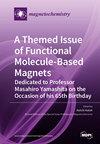Effect of SiO2/Organosilicone Double Insulation Coating Processes on the Properties of Ferrosilicon Magnetic Cores
IF 2.5
4区 化学
Q2 CHEMISTRY, INORGANIC & NUCLEAR
引用次数: 1
Abstract
A nano-SiO2 inorganic insulation layer was coated on the surface of FeSi magnetic powder via in situ fluidised vapour deposition. The surface was then coated with organosilicon resin to form an inorganic/organic double-insulating layer. Post-forming and annealing, a ferrosilicon magnetic powder core was prepared. The effects of organosilicon resin content and pressing pressure on the permeability and loss of the ferrosilicon magnetic core were studied. When the ferrosilicon magnetic core was doubly insulated with SiO2/silicone resin, the silicone resin content increased, the insulation coating gradually thickens, and the saturation magnetic-induction intensity of the magnet gradually decreases; the density and effective permeability showed a trend of increasing first and then decreasing. Increasing the forming pressure can reduce the loss of the core, thereby improving the performance of the core and increasing the permeability without damaging the double-cladding layer. In the powder with the optimised silicone resin content (1.5 wt.%), the magnetic properties of the magnetic core were maximised after preparation at 1500 MPa followed by heat treatment at 773 K. The saturation magnetisation was 187.5 emu/g and the resistivity and permeability reached 10.5 Ω·cm and 49.6, respectively, at 100 mT and 50 kHz. The total loss was 905 mW/cm3.SiO2/有机硅双绝缘涂层工艺对硅铁磁芯性能的影响
采用原位流化气相沉积法在FeSi磁粉表面制备了纳米SiO2无机绝缘层。然后用有机硅树脂涂覆表面以形成无机/有机双重绝缘层。经过成形和退火处理,制备了一种硅铁磁粉芯。研究了有机硅树脂含量和压制压力对硅铁磁芯磁导率和损耗的影响。当硅铁磁芯与SiO2/硅树脂双重绝缘时,硅树脂含量增加,绝缘涂层逐渐增厚,磁体的饱和磁感应强度逐渐降低;密度和有效渗透率呈先增大后减小的趋势。增加成型压力可以减少芯体的损耗,从而在不损坏双包层的情况下提高芯体的性能和磁导率。在具有优化的有机硅树脂含量(1.5wt.%)的粉末中,在1500MPa下制备并在773K下热处理后,磁芯的磁性能最大化。在100mT和50kHz下,饱和磁化率为187.5emu/g,电阻率和磁导率分别达到10.5Ω·cm和49.6。总损失为905mW/cm3。
本文章由计算机程序翻译,如有差异,请以英文原文为准。
求助全文
约1分钟内获得全文
求助全文
来源期刊

Magnetochemistry
Chemistry-Chemistry (miscellaneous)
CiteScore
3.90
自引率
11.10%
发文量
145
审稿时长
11 weeks
期刊介绍:
Magnetochemistry (ISSN 2312-7481) is a unique international, scientific open access journal on molecular magnetism, the relationship between chemical structure and magnetism and magnetic materials. Magnetochemistry publishes research articles, short communications and reviews. Our aim is to encourage scientists to publish their experimental and theoretical results in as much detail as possible. Therefore, there is no restriction on the length of the papers. The full experimental details must be provided so that the results can be reproduced.
 求助内容:
求助内容: 应助结果提醒方式:
应助结果提醒方式:


